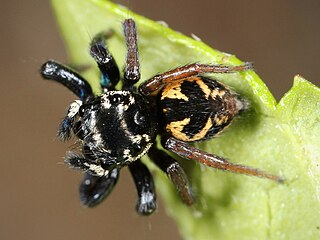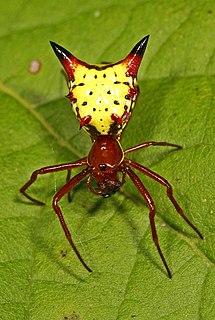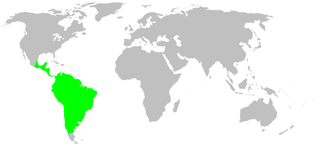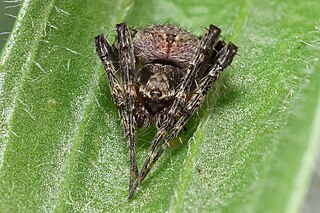
Acragas is a genus of jumping spiders that was first described by Eugène Louis Simon in 1900. The name is derived from the Greek name of Agrigentum, an ancient city on Sicily.
Ashtabula is a genus of jumping spiders that was first described by G. W. Peckham & E. G. Peckham in 1894.

Balmaceda is a genus of jumping spiders that was first described by George Peckham & Elizabeth Peckham in 1894.

Breda is a genus of jumping spiders that was first described by George Peckham & Elizabeth Peckham in 1894.

Chapoda is a genus of jumping spiders that was first described by George Peckham & Elizabeth Peckham in 1896.

Corythalia is a genus of jumping spiders that was first described by Carl Ludwig Koch in 1850.

Freya is a genus of jumping spiders that was first described by Carl Ludwig Koch in 1850. The name is derived from Freya, the fertility goddess of Norse mythology.

Lyssomanes is a spider genus of the family Salticidae, ranging from South and Central America, up to the southern United States.

Metaphidippus is a genus of jumping spiders that was first described by Frederick Octavius Pickard-Cambridge in 1901. The name is combined from Ancient Greek μετά "after, beside" and the salticid genus Phidippus.

Pachomius is a genus of jumping spiders that was first described by George and Elizabeth Peckham in 1896. Uspachia was merged into genus Romitia in 2007, and all nine species were merged into Pachomius in 2015. The name is derived from Pachomius, the founder of cenobitic monasticism.

Sassacus is a genus of jumping spiders that was first described by George and Elizabeth Peckham in 1895. It is likely named after Sassacus, a Native American chief of the 16th and 17th century.
Sidusa is a genus of jumping spiders that was first described by George and Elizabeth Peckham in 1895.

Zygoballus is a genus of jumping spiders found in North and South America.

Micrathena, known as spiny orbweavers, is a genus of orb-weaver spiders first described by Carl Jakob Sundevall in 1833. Micrathena contains more than a hundred species, most of them Neotropical woodland-dwelling species. The name is derived from the Greek "micro", meaning "small", and the goddess Athena.

The Dendryphantina are a subtribe of jumping spiders that occur mainly in the New World. The subtribe was first defined by Anton Menge in 1879 as Dendryphantidae. Females of the subtribe generally show paired spots on the abdomen, and the males often have enlarged chelicerae. Females in this subtribe typically have S-shaped epigynal openings.

Senoculus is a genus of araneomorph spiders in the family Senoculidae, and was first described by Władysław Taczanowski in 1872. It is the only genus in the family Senoculidae.

Eustala is a genus of orb-weaver spiders first described by Eugène Simon in 1895.

Wulfila is a genus of ghost spiders first described by O. Pickard-Cambridge in 1895. They are easily recognized by their pale white elongated legs.
















